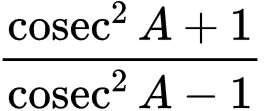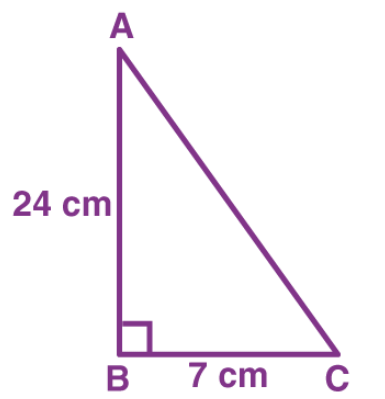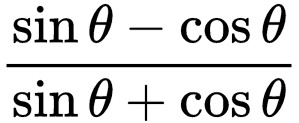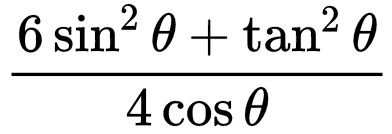Practice Questions: Introduction to Trigonometry | Mathematics (Maths) Class 10 PDF Download
Questions
1. If sin 3θ = cos (θ – 6)° and 30 and (θ – 6)° are acute angles, find the value of θ.
2. If 3 cot A = 4, find the value of  .
.
3. In ∆ ABC, right-angled at B, AB = 24 cm, BC = 7 cm.
Determine:
(i) sin A, cos A
(ii) sin C, cos C

4. Evaluate 2tan2 45° + cos2 30° – sin2 60°.
5. If sin θ + cos θ = √2, then evaluate tan θ + cot θ.
6. If sin θ + sin2θ + sin3θ = 1, then find the value of cos6 θ – 4 cos4 θ + 8 cos2 θ.
7. What is the value of 0, for sin2θ = 1, where 0° < θ < 90°?
8. In ∆ABC, ∠B = 90°. If AB = 14 cm and AC = 50 cm then tan A equals?
9. If 4 cot θ = 3 then what is the value of  ?
?
10. What is the value of cosec2 27° – tan2 63°?
11. If ∆ABC is right angled at C, then what is the value of cos(A + B)?
12. If 3 cos θ = 1, then what is the value of  ?
?
13. Evaluate 
14. If sin 3θ = cos (θ – 6)° and 30 and (θ – 6)° are acute angles, find the value of θ.
15. If sec 3A = cosec (A – 10°) where 3A is an acute angle, find the value of A.
Answers
1. θ = 24°
2. 17/8
3. (i) Sin A = 7/25 and cos A = 24/25
(ii) Sin C = 24/25 and Cos C = 7/25
4. 2
5. 2
6. 4
7. 45°
8. 7/24
9. 1/7
10. 1
11. 0
12. 10
13. 2
14. θ = 24°
15. A = 25°
|
127 videos|584 docs|79 tests
|
FAQs on Practice Questions: Introduction to Trigonometry - Mathematics (Maths) Class 10
| 1. What is the Pythagorean theorem and how is it applied in trigonometry? |  |
| 2. How do you find the sine, cosine, and tangent of an angle in a right triangle? |  |
| 3. What are the key trigonometric identities that students should memorize? |  |
| 4. What is the unit circle and why is it important in trigonometry? |  |
| 5. How can trigonometry be applied in real-life scenarios? |  |

















